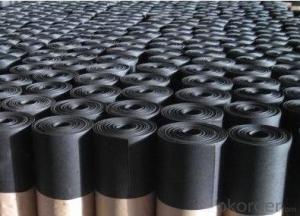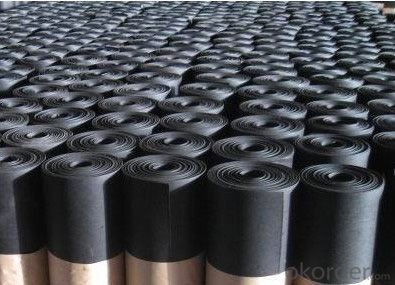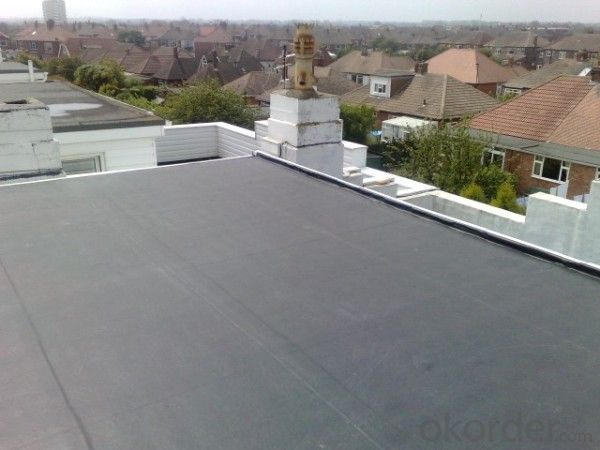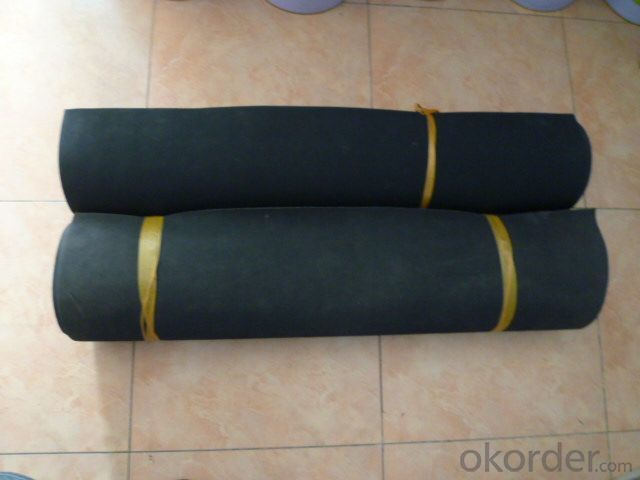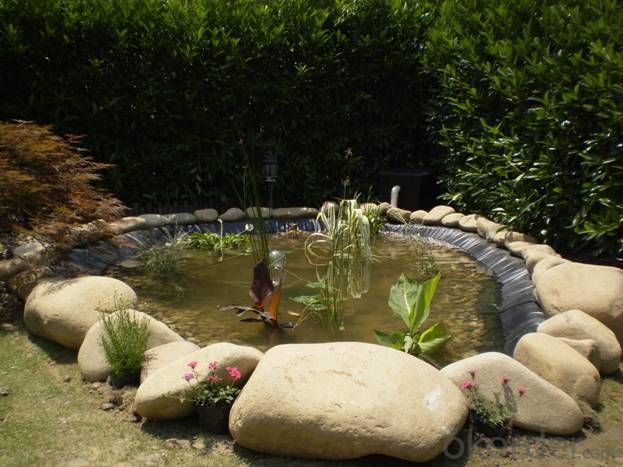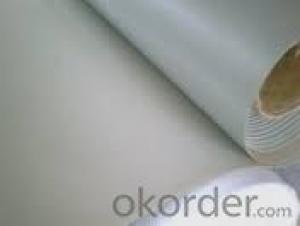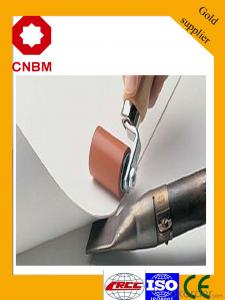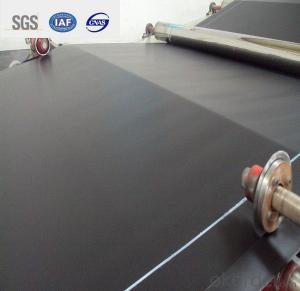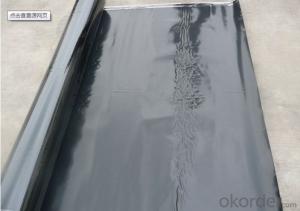EPDM Coiled Rubber Waterproof Membrane for Underground
- Loading Port:
- Shanghai
- Payment Terms:
- TT OR LC
- Min Order Qty:
- 50000 m²
- Supply Capability:
- 5000000 m²/month
OKorder Service Pledge
OKorder Financial Service
You Might Also Like
EPDM Coiled Rubber Waterproof Membrane for Underground
Description Of EPDM Coiled Rubber Waterproof Membrane for Underground:
•EPDM waterproof sheet has excellent anti-ozone-aging performance, able to resist ultraviolet light and corrosion of many chemical corrosive materials in the atmosphere
•It has high tensile strength, high ductility and strong retractility, it has excellent crack resistance, able to effect waterproof function even with tiny vibration of buildings.
• Excellent resistance to ozone, oxidation and sunlight.
• Resistance to chemicals; resistant to most inorganic products.
Main Features of EPDM Coiled Rubber Waterproof Membrane for Underground:
A.Polyester based SBS Modified Bitumen Waterproofing Membrane
a. Strong impermeability
b. High tensile strength, elongation, ability to adapt the grassroots shrinkage deformation and cracking
c. Puncture-resistant, broken resistant, tear-resistant
d. The corrosion resistance, resistance to mildew, weathering good
e. Construction convenient, hot-melt can be operated Four Seasons Construction, reliable joints
Specifications of EPDM Coiled Rubber Waterproof Membrane for Underground:
| Material | EPDM Rubber |
| Size | 1.2m (width)*20m (length) or customized, weldable type 2.05m or 4m width |
| Thick | 1.2mm, 1.5mm, 2.0mm |
| Type | Vulcanized & Weldable |
| Pattern | Non-reinforced (homogeneous) |
| Certificate | ISO9001/14001 |
Applications of EPDM Coiled Rubber Waterproof Membrane for Underground:
1. The substratum should be smooth, dry, clean, which can not have loosing and peeling phenomena.
2. Before application, clean up the basic level and eradicate the impurities.
3. Spread out the membrane on the substratum to loose sheet's stress. Use adhesive-glue to paint the substratum and the surface of membrane. When the adhesive is not sticky to hands, pave and press smoothly.
4. When pave the second volume of membrane, extrude 100mm of the edge of overlap of the first roll and do not paint with the adhesive. Pave the membrane on the substratum according to step so as to finish the whole pavement. When paving, do not tighten the waterproof membrane violently.
5. After that, use the special solvent to scrub the overlap joint. When it becomes fully dry , use the sheet glue to paint the both sides of the joint. Paint it again when it gets completely dry. Till the adhesive is not sticky to hands, press it smoothly and solidly.
6. Pay attention to fire prevention during application. Basement construction site shall be equipped with ventilation facilities
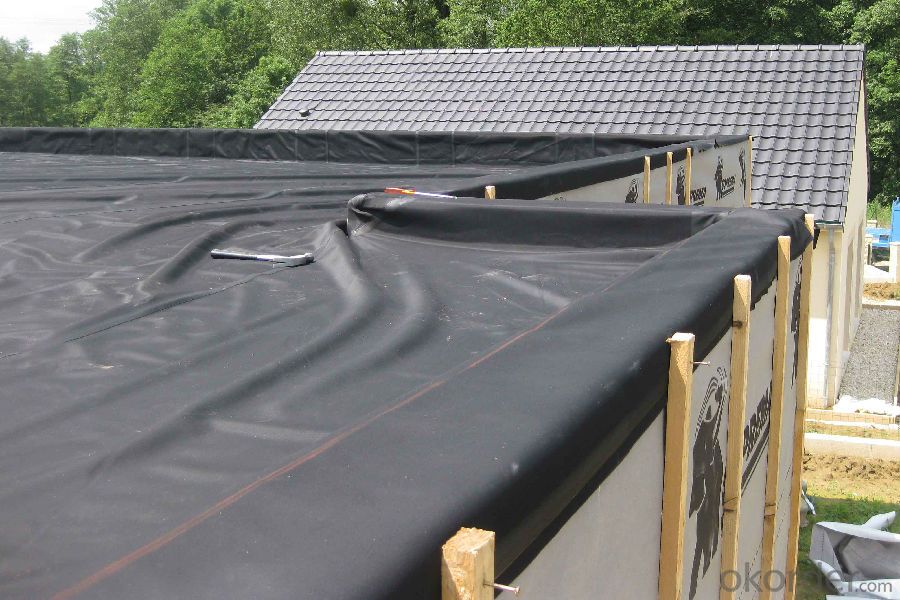


IMages of EPDM Coiled Rubber Waterproof Membrane for Underground:
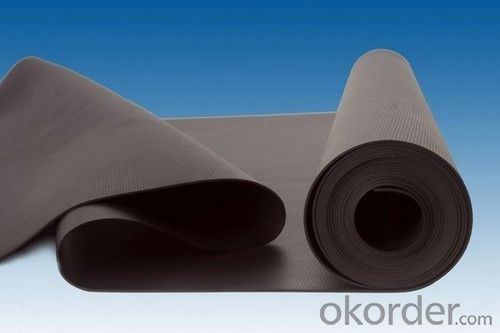



FAQ of EPDM Coiled Rubber Waterproof Membrane for Underground:
1. What are we supplying?
We are specialized in producing Colorful Asphalt Roof Shingle, SBS/APP modified bitumen waterproof membrane, Self adhesive bitumen waterproof membrane, PVC waterproofing membrane, EPDM rubber roofing membrane, Single Component Polyurethane Waterproof Coating, and Spray Polyurea Waterproof Coating
.
2. How Many years experience do we have?
We have been exported to more than 20 countries in the past 15 years.
3. How long do we usually reply your request?
We always reply our customer within 24 hours.
- Q: Can a waterproofing membrane be used for tunnels or subway systems?
- Tunnels and subway systems frequently encounter water infiltration as a result of the soil conditions or groundwater levels in their vicinity. To counteract this issue, a waterproofing membrane is commonly employed. This membrane serves as a protective shield, effectively obstructing water from permeating into the tunnels or subway systems. Its installation is typically carried out on the outer surfaces of the tunnel walls and roof, establishing an impervious seal. By doing so, it aids in the prevention of corrosion, decay, and harm to the structural components of the tunnels, guaranteeing the durability and safety of these subterranean infrastructures.
- Q: Is a waterproofing membrane resistant to impact damage?
- No, a waterproofing membrane is not typically resistant to impact damage.
- Q: Can a waterproofing membrane be used in boat decks or marinas?
- Yes, a waterproofing membrane can be used in boat decks or marinas. Boat decks and marinas are constantly exposed to water, making them prone to damage and deterioration over time. A waterproofing membrane can provide an effective solution to protect these surfaces from water intrusion, preventing issues such as rotting, warping, and mold growth. The membrane acts as a barrier, preventing water from seeping into the underlying structure and causing damage. It also helps to maintain the structural integrity of the boat deck or marina, prolonging its lifespan. Additionally, a waterproofing membrane can enhance the safety of these surfaces by reducing the risk of slip and fall accidents, as it can provide a slip-resistant surface. Overall, using a waterproofing membrane in boat decks or marinas is a wise choice to ensure their durability, longevity, and safety.
- Q: Can waterproofing membranes be used on elevator shafts?
- Yes, waterproofing membranes can be used on elevator shafts to prevent water infiltration and protect the structure from moisture damage.
- Q: Can a waterproofing membrane be used for fountains or water features?
- Indeed, fountains or water features can make use of a waterproofing membrane. Such membranes find widespread use across various applications, encompassing below-grade waterproofing, roofing systems, and even ponds. Their purpose is to establish a barrier against water infiltration, thereby safeguarding the underlying structure against water-related harm. In the context of fountains or water features, a waterproofing membrane serves to avert leaks and seepage, ensuring that the water remains confined within the intended boundaries. Furthermore, these membranes typically possess flexibility and durability, rendering them well-suited for deployment in areas subject to perpetual water exposure and potential movement.
- Q: How does a waterproofing membrane ensure a watertight seal around penetrations?
- A waterproofing membrane ensures a watertight seal around penetrations by providing a protective barrier that prevents water from seeping through gaps or openings. It is designed to adhere tightly to the surface, creating a seamless and impermeable layer that seals off any potential entry points for water. This membrane acts as a shield, effectively preventing moisture from penetrating the structure and causing damage or leakage.
- Q: Can a waterproofing membrane be used in areas with high foot traffic or heavy loads?
- Yes, a waterproofing membrane can be used in areas with high foot traffic or heavy loads. Waterproofing membranes are designed to provide durability and protect the underlying structures from water damage. They are often used in areas such as basements, balconies, and rooftops, which may experience heavy foot traffic or support heavy loads. However, it is important to choose a membrane specifically designed for high traffic or heavy load areas to ensure it can withstand the intended use.
- Q: Is a waterproofing membrane resistant to UV rays?
- Indeed, UV rays can be resisted by a waterproofing membrane. Numerous waterproofing membranes are specifically designed and produced with additional substances that provide safeguard against UV rays. These substances aid in preventing the membrane from deteriorating and losing its waterproofing properties when it comes in contact with sunlight. The resistance to UV rays is a crucial characteristic in waterproofing membranes, particularly for situations where the membrane will be exposed to direct sunlight for extended periods, such as rooftops or outdoor structures. However, it is essential to acknowledge that the degree of UV resistance may vary depending on the specific type and brand of waterproofing membrane. Consequently, it is always advisable to examine the product specifications and seek guidance from the manufacturer to ensure that the chosen membrane offers the desired level of UV resistance for the intended application.
- Q: How is a waterproofing membrane installed?
- To achieve proper installation and effective waterproofing, the installation process of a waterproofing membrane usually follows a step-by-step approach. Here is a general outline of how the installation takes place: 1. Surface Preparation: The initial step involves preparing the surface where the membrane will be installed. This necessitates a thorough cleaning of the surface, eliminating any dirt, debris, or loose materials. The objective is to create a clean and smooth surface to ensure optimal adhesion of the membrane. 2. Priming: Subsequently, a primer is applied to the surface to enhance the adhesion between the membrane and the substrate. It also provides a uniform surface for the membrane to adhere to. 3. Membrane Application: The next step involves applying the waterproofing membrane onto the prepared surface. There are various types of membranes available, such as sheet membranes or liquid-applied membranes. Sheet membranes are typically rolled out onto the surface and adhered using a suitable adhesive or self-adhesive backing. Liquid-applied membranes are spread or sprayed onto the surface in multiple coats, allowing each coat to cure before applying the next one. 4. Seam and Joint Treatment: In areas where multiple sheets or sections of the membrane intersect, special attention is given to treating the seams and joints to ensure a watertight seal. This may entail overlapping the sheets and applying a seam tape or using a liquid-applied sealant to fill any gaps or joints. 5. Protection and Drainage: Once the membrane is installed, it is crucial to safeguard it from damage and facilitate proper drainage. This can be achieved by installing a protective layer, such as a geotextile fabric or a drainage board, over the membrane. These layers serve to prevent punctures or abrasions and allow any water that penetrates the surface to drain away effectively. 6. Quality Control: After the completion of the installation, it is essential to conduct quality control checks to ensure the correct installation of the membrane. This may involve visual inspections, water tests, or the utilization of specialized equipment to test the integrity of the membrane. It should be noted that the specific installation process may vary depending on the type of waterproofing membrane employed and the requirements of the project. It is advisable to adhere to the manufacturer's guidelines and consult with a professional waterproofing contractor for accurate installation instructions.
- Q: Can a waterproofing membrane be used for soundproofing purposes?
- To some extent, a waterproofing membrane can serve the purpose of soundproofing as well. While its primary function is to prevent water from seeping through, it also has the ability to minimize sound transmission. Typically, waterproofing membranes are constructed using materials that possess excellent acoustic properties, such as rubber or a combination of rubber and asphalt. These materials have the capability to absorb and muffle sound waves, resulting in a reduction in noise that can penetrate walls or floors. However, it's important to note that the soundproofing capabilities of a waterproofing membrane may not be as substantial as those of specialized soundproofing materials like acoustic panels or insulation. Therefore, if soundproofing is the main objective, it is advisable to consider utilizing dedicated soundproofing solutions in conjunction with or instead of a waterproofing membrane.
Send your message to us
EPDM Coiled Rubber Waterproof Membrane for Underground
- Loading Port:
- Shanghai
- Payment Terms:
- TT OR LC
- Min Order Qty:
- 50000 m²
- Supply Capability:
- 5000000 m²/month
OKorder Service Pledge
OKorder Financial Service
Similar products
Hot products
Hot Searches
Related keywords
